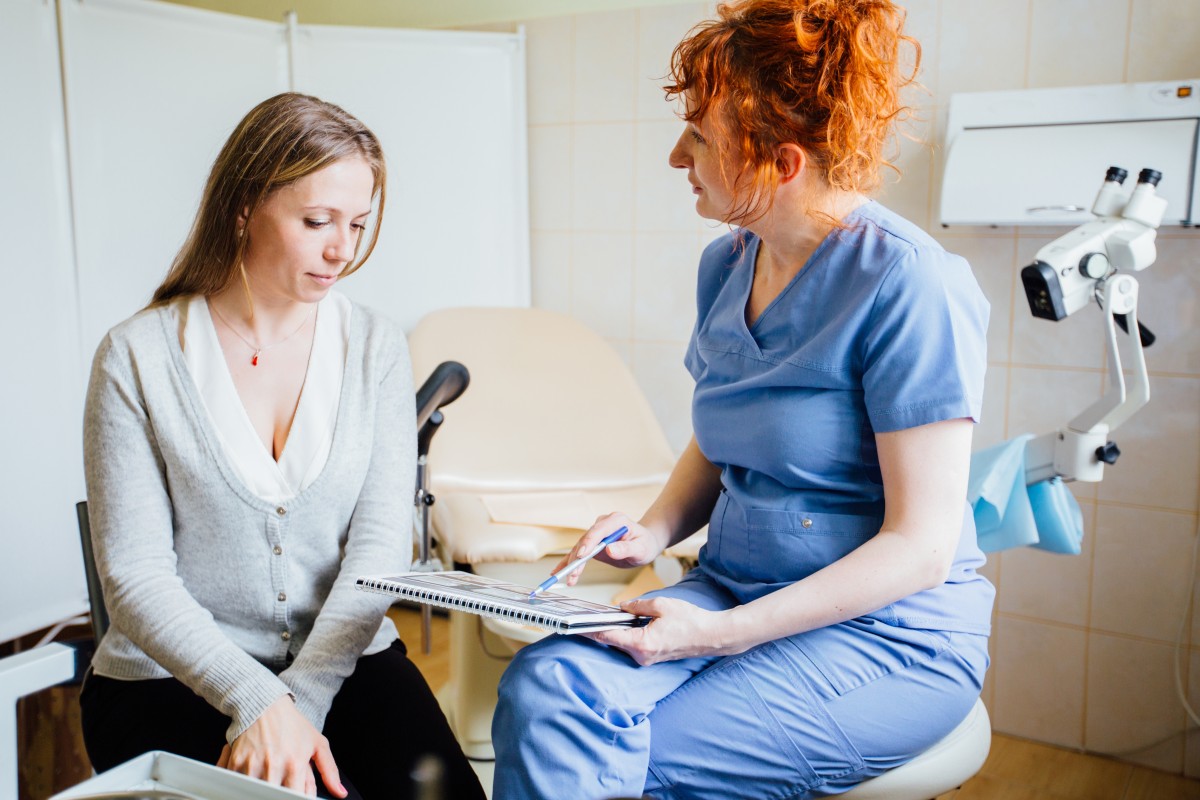Using Patient Education Videos to Support Preventive Care Strategies
As a healthcare provider, you know prevention saves lives. From routine screenings and lifestyle counseling to vaccinations and early detection,...
5 min read
Robert McDermott Feb 8, 2024 12:30:00 PM
 In the last few years, deaths related to chronic conditions actually went up, despite advancements in medicine that help treat those conditions. Obviously, this has doctors concerned. One potential cause, noted by medical professionals, is a failure of patients to adhere to treatment plans or doctor instructions. Similarly, dentists face the same struggle. And, as we make more and more connections between dental health and heart health, treatment plan adherence becomes even more important.
In the last few years, deaths related to chronic conditions actually went up, despite advancements in medicine that help treat those conditions. Obviously, this has doctors concerned. One potential cause, noted by medical professionals, is a failure of patients to adhere to treatment plans or doctor instructions. Similarly, dentists face the same struggle. And, as we make more and more connections between dental health and heart health, treatment plan adherence becomes even more important.
Thankfully, as we use technology to better monitor patient health, we can also use it to combat non-adherence. In fact, patient education tools are advancing rapidly as well, including the increasing use of video. But learning how we can improve patient education to improve treatment plan adherence is the first step.
Quick Links
In brief, treatment plan adherence or, more colloquially, “following doctor’s orders” is crucial for both patient health outcomes, individual practices, and the broader healthcare system.
More specifically, treatment plan adherence is the degree to which patients follow the recommendations provided by their healthcare provider. From managing chronic conditions or recovering from surgery to preventive measures, how closely patients adhere to treatment plans has a direct impact on their individual health outcomes.
Healthcare providers don’t advise patients to take medications or engage in specific behaviors with no end goal in mind. Treatment plans ensure patients receive the full benefits of any dental or medical intervention to either accelerate the healing process or minimize the risk of complications, hospital readmissions, or disease progression. Sadly, there are over 100,000 deaths associated with a failure to follow aftercare instructions. In short, adherence is what’s best for the patient.
And, when it comes to ensuring long term patient engagement and practice loyalty, encouraging treatment plan adherence is an investment. Patients who are more engaged in their treatment plans, are more likely to not only show up for appointments, but also to continue their treatment plans. That, in turn, creates positive outcomes and initiates a positive feedback loop that benefits both individuals and your medical or dental practice.
As for your medical or dental practice, and even the larger healthcare system, treatment plan adherence is an efficiency and cost saving mechanism. Patients who follow treatment plans are less likely to schedule return visits, require readmissions, or need emergency care. In turn, this lessens the burden on healthcare teams and saves patients money and your practice resources.
 The Link Between Patient Education and Treatment Plan Adherence
The Link Between Patient Education and Treatment Plan AdherenceIn very simple, straightforward terms, a well-informed patient is much more likely to participate in their healthcare plan. They’re more likely to ask questions, report concerns, and follow instructions – all of which contribute to better patient outcomes.
Sometimes, it’s easy as an HCP to gloss over aspects of conditions or care, to forget fears and concerns that exist simply because of the unknown. Patient education serves as a tool for building health literacy which empowers patients to better understand their conditions, treatment options, and the rationale behind your prescribed treatment plan.
When patients possess a clear understanding of their health status, they are better able to make informed decisions in collaboration with their loved ones and healthcare providers. This shared decision-making process provides a sense of ownership over one's health, building trust between patient and provider.
The “why” behind a procedure or treatment creates, in a patient, a sense of personal responsibility over their health. Informed patients, in turn, are more likely to adhere to treatment plans, recognizing them not as directives but essential components in their healthcare and well-being.
And yet, every healthcare provider has likely seen a patient’s eyes glaze over when they’re confronted with a lot of information at once. In response, many turn to the internet, where misinformation and horror stories abound. Thankfully, there are options.
One of the most important aspects of patient education is delivery. As we mentioned, when it comes to procedures, treatments, behavioral changes, medication, and more, packets of printed material often don’t do the job. Let’s be honest, stacks of printed information, pamphlets, and brochures are likely to be tossed aside for a variety of reasons.
So how do healthcare providers ensure patient education does its job, doesn’t get discarded, and improves treatment plan adherence? There are a few key components to consider.
1. Assess Patient Needs. Through conversation with a patient, assess their understanding of their current condition or the treatment being recommended. Explore any potential barriers to care or adherence including comprehension and health literacy or cultural background. Further, try to figure out if there are learning preferences so you can deliver education in a way they can digest it.
2. Use Clear Communication. When talking with patients, use plain language and avoid medical jargon. Encourage patients to ask questions and express concerns, especially after lengthy explanations. Ask them directly, “What questions do you have?” Then, confirm patient understanding by asking them to explain or repeat key information.
3. Tailoring Information to Individual Patients. As doctors,you know that every patient comes with a unique set of circumstances and conditions or comorbidities. That means patient education plans should speak to a patient's specific condition, treatment plan, and lifestyle. More specifically, you may need to address additional information or concerns based on a patient's age, cultural background, and socioeconomic factors.
4. Use a Variety of Methods. We’ve talked about the typical brochures and pamphlets, and that’s all many patients are used to receiving for information on proposed treatments. However, employing a variety of teaching methods such as visual aids, demonstrations, written materials, and digital resources will strengthen patient understanding as well as their ability to share information. Research suggests that patient education methods, even brochures, reduces stress and improves patient satisfaction.
5. Repeat and Reinforce Important Information. From the goals of a procedure to treatment milestones, repeating and reinforcing key points will help patients remember those aspects. As you break down difficult concepts, coming back to them frequently may help not only with understanding but in encouraging patients to ask questions. Finally, providing opportunities for patients to do this on their own (resources they can access from home) strengthens this method.
6. Engage Patients During Education. Use technology, when appropriate, to enhance engagement and encourage questions and conversation. More and more healthcare providers are turning to technology to assist with patient education primarily because of the value it adds when it comes to engagement and comprehension. Video is exceptional for this as you can pause as needed to address concerns and questions.
7. Involve Family and Caregivers. As we mentioned above, some healthcare decisions aren’t made without input from family, friends, or caregivers. Engaging them in the education process ensures they also understand treatment plan recommendations.
8. Regularly Assess Understanding. As any teacher can tell you, nodding along is not an indicator of understanding. Further, people may report understanding only to then return home and realize they didn’t fully grasp all of it when trying to relay the information. Regularly checking in with a patient and providing them with resources they can review easily can ensure ongoing understanding and comprehension.
9. Consider Cultural Competency. Be sensitive to cultural differences and integrate cultural competence into education strategies. The same is true for language preferences. Failure to account for cultural or language differences can create misunderstandings and diminish trust.
10. Make Resources Accessible. Provide written materials, videos, or digital resources patients can reference at home. And, as you would avoid complex language, avoid resources that are above a patient’s reading level or include jargon a patient might misunderstand.
Incorporating these key components into patient education practices can significantly improve the effectiveness of your educational efforts and support patients in making informed decisions about their health.
Among the tools available, video education tools can be among the most successful, especially if they take these key components into account. Whether sharing videos in your exam room or links with patients to view at home with family, patient education videos are quickly becoming a go to source for doctors and dentists.
Now imagine having access to a library of over 100+ videos documenting and explaining common procedures for use in your medical or dental practice, voice narrated, in both English and Spanish, and the ability to text or email links to patients for repeat viewing and reinforcement. Sound good? Sounds like iCoreAcademy.
If you’re ready to prioritize patient education, improve understanding, and decrease patient fear, get in touch with our team today.

As a healthcare provider, you know prevention saves lives. From routine screenings and lifestyle counseling to vaccinations and early detection,...

There’s no denying that the AI boom is here. The American Medical Association reports that 66% of physicians are currently using artificial...

If only managing your practice’s revenue cycle came with a crystal ball. You could spot claim denials before they happen, predict when patients might...

As a healthcare provider, you know prevention saves lives. From routine screenings and lifestyle counseling to vaccinations and early detection,...

If making decisions were simple, we wouldn’t have countless books, seminars, webinars, or conferences with experts weighing in about how to improve...

Wondering how to make a home repair? Car repair? Get a good workout? Learn a language? There’s a video for that. Increasingly, in classrooms across...